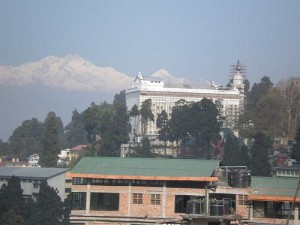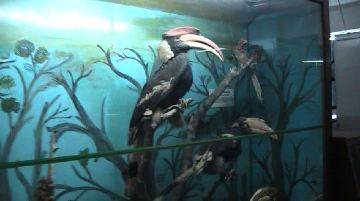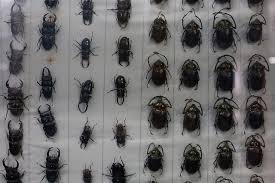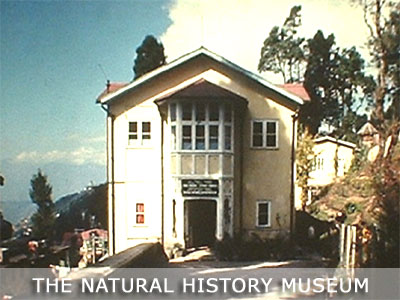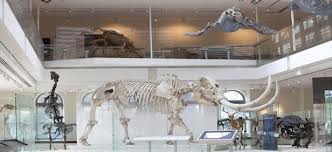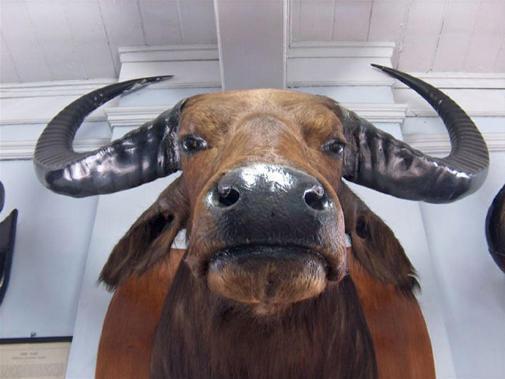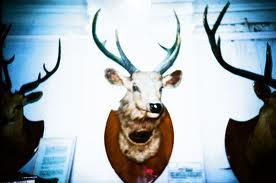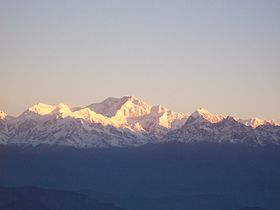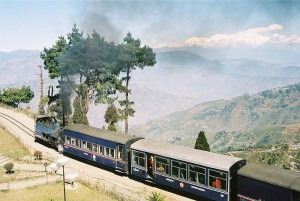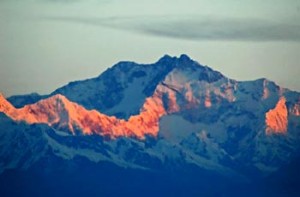India /West Bengal /Darjeeling /Darjeeling
Sight Address : Bengal Natural History Museum is located Bishop Eric Benjamin Rd, Darjeeling 734101, India.Edit
Detail InformationEdit
Bengal Natural History Museum is near Chowrashtra, the heart of Darjeeling. The museum contains a representative and comprehensive, but dusty, collection of Himalayan and Bengali fauna. The museum houses more than 4300 specimens. Bird species, reptiles, and other animals of the Eastern Himalayas are displayed at true to life altitudes.The butterfly and beetle section merits special mention. Specimens of estuarine crocodile, which is responsible for the greatest loss of human life in Asia, are also seen here. Mineral forms of various stones are attractively displayed. In 1923, Bengal Natural Museum Society was formed that took charge of the management of the museum. It continued until 1976 after which the management was taken over by the Forest Department of Government of West Bengal. During the initial days of the museum, an amateur ornithologist Charles M Inlis was the Curator of the museum. He held the post for 26 years since 1923. During his time, he had put in immense effort and built up the museum with active support from many officials including E.O. Shebbeare, The Conservator of Forest (Bengal), G.E. Shaw, The Superintendent of Cinchona Plantation, and many others. Today the museum houses huge collection and specimens that include wide varieties of birds with nests and eggs, reptiles and fishes, mammals, insects and more. All these specimens are of real creatures that were captured and preserved. There is a special taxidermy unit in the museum which specializes in curing, staffing and rendering the birds and animals for display on the glass cabinets. This unit has been there right from the inception of the museum.
There are two large sections of the museum. One at the ground level and the other at the basement. As you enter the large room at the ground level, there are rows of glass cabinets on both sides. The first section is that of birds. You will see specimens like Himalayan Brown Wood Owls, Northern spotted owlet, Northern Brown Fish Owl, pheasants, fly catchers, woodpeckers and lot more. They are all placed in natural settings on the tree branches. Some of the birds displayed are really huge in size and it’s unlikely that you would have seen such sizes before. There are over 820 specimens of birds belonging to more than 400 species of the area. There are only two foreign species that have been given as gifts to the museum. On one side you will notice large collections of birds’ eggs. There are actually 110 species of eggs, but all are not displayed due to lack of space. There is nice collection of nests of various sizes. Straight ahead in the main room is a gigantic crocodile. The species is called Estuarine which is supposed to be one of the fierce predators. It’s kept in a low flat glass cabinet.
Estuarine Crocodile at the Museum
There are 35 out of 76 species of snakes in the area that are displayed in the museum. There are many other specimens of reptiles and amphibians in the museum. And out of fishes in the area, you can see 57 species out of 100. As you move around the ground floor room, you will see different kinds of animals on display. Tibetan fox, Tibetan Lynx that looks like a large cat, Toddy cat, heads of wild buffaloes hanging from the walls, panthers or leopards are some of the great displays. You will also notice two huge elephant’s ivory placed side by side in a circular fashion just behind the crocodile.
There is a section here dedicated for the insects. There are various types of butterflies, moths, dragonflies and beetles that are displayed on glass cabinets. You can actually see 608 different species of butterflies and moths, and 1104 types of other insects here.The basement has been renovated in 2002. It has many types of birds like pelicans, jungle fowls and others against various land features of West Bengal. As you go down the stairs and enter the room, you feel as if you are in a natural green environment within trees and birds. The landscapes shown here are divided into various sections. The section ‘F’ represents moist deciduous forest growing in the lower hills of North Bengal, Section ‘D’ shows the Wet Lands, ‘C’ is fertile Gangetic plains of the state, ‘B’ is for dry areas of the state with its natural vegetation, ‘A’ shows the Eco system of Sundarbans area and its vegetation.
HistoryEdit
Bengal Natural History Museum, established in 1903, houses a mildewed and moth-eaten collection of Himalayan and Bengali species. Hidden away in a compound just off Bishop Eric Benjamin Rd, it’s well signed, and remarkably popular. The enormous leeches in jars will provoke a shudder.
Must SeeEdit
Attraction
Visiting TimeEdit
9am to 5pm
Closed OnEdit
Thursday & National Holidays
Best Season to VisitEdit
Winter (December to January)
Spring (February to March)
Summer (April to June)
Autumn (September to November)
Best Time To VisitEdit
Morning , Afternoon.
Time Required for SightseeingEdit
N.A.
Ticket Required : Yes Edit
Individual National Adult Rs. : Rs. 10
Kids Rs. : N.A.
Individual Foreigner Adult Rs. : N.A.
Kids Rs. : N.A.
Still Photo Camera Rs. : N.A.
Video Camera Rs. : N.A.
Guide Required : No Edit
Approximate cost: N.A.
Dress Code (If Any) : No Edit
Dress Require: N.A.
Restaurants NearbyAdd / Edit
- N.A. ; N.A. ; Ph/M – N.A. ; Food Serve – N.A.
How to ReachEdit
Taxi : Intra-city transport is mostly by hired taxis. The private taxis or cars are essentially of two types – small cars like Maruti Vans or Santros, and large ones like Scorpio, Tata Sumo etc. While you can always take a private taxi/car from outside the station or airport, negotiate the rates and move for Darjeeling, it is always advisable to take one from the Pre-Paid taxi counters located inside the station and the airport.
Bus : You will get buses only from the Tenzing Norgay Central Bus Terminus located on Hill Cart Road in Siliguri. It is about 8kms from NJP station. The usual route is by Hill Cart Road and the travel duration is about 4 hours. Bus fare from Siliguri to Darjeeling Via Hill Cart Road: Rs. 50.00 per person Bus fare from Siliguri to Darjeeling Via Mongpu: Rs. 80.00 per person. The Mongpu route is taken in case the Hill Cart Road is closed. After getting down at the bus stop, you can take an auto-rickshaw, or hire a taxi to reach the destination within the city.
Train : New Jalpaiguri is the nearest major railway station. New Jalpaiguri is well connected to major Indian cities, especially Kolkata. The diesel engine hauled toy train leaves NJP station at 9am and takes about 7 hours 15 minutes to reach Darjeeling. You can also board the train from Siliguri Town Station or Siliguri Junction Station that are 5kms and 8kms away from NJP respectively. There are also toy trains available from Siliguri Junction and Darjeeling for joy rides. These are steam engine hauled toy trains. Check out Darjeeling Toy Train Services for current status and schedules.
NJP to Darjeeling (1st Class): Not operational since Sept 2010 due to track damage
NJP to Darjeeling (2nd Class): Not operational since Sept 2010 due to track damage
Darjeeling to Ghoom & back Joy Ride (First Class): Rs. 270.00 per person if booked through IRCTC website. This two hours ride includes entry fee for the DHR Museum at Ghoom.
Siliguri Junction Station to Tindharia & back Joy Ride: Rs. 496.00 per person. After getting down at the railway station, you can take an auto-rickshaw, bus or hire a taxi to reach the destination within the city.
Air : Darjeeling does not have an airstrip. The nearest airport is Bagdogra airport (IXB), near Siliguri, which is a 3-hour (approx. 90 km) drive from Darjeeling. Indian, Jet Airways and Kingfisher Airlines are the three major carriers that fly to Delhi, Kolkata and Guwahati from Bagdogra. Indian Airlines (2254230; Chowrasta) (10am-5.30pm Mon-Sat). Pineridge Travels (2253912; pineridge@mail.com; Nehru Rd; h10am-5pm Mon-Sat) For domestic and international flight tickets. After getting down at the airport, you can take an auto-rickshaw, bus or hire a taxi to reach the destination within the city.
Others : Toy train are also available for this destination.
Things to CarryEdit
Carry bottle of drinking water.Sun-screen, sun glasses, tissue-rolls, roll of duct-tape, extra batteries, torchlight, water, energy-bars are ‘must-carry’ along with a First-aid kit.
•Medicines to carry when you are travelling to a new place or when you’re away from home town (which must be approved and prescribed by your physician or medical practitioner) are:
• Painkillers
• Anti-inflammatory
• Wide-spectrum antibiotic
• Anti-diarrhea
• Anti-constipation pills
• Mild sleeping pills – just in case you feel very overwhelmed by the altitude and atmosphere because of which you are unable to sleep.
Safety / WarningEdit
Drinking Water Problem in Darjeeling.
HelplineEdit
Police-100
Women-181
Fire – 101
Ambulance – 102
Child Helpline – 1098
